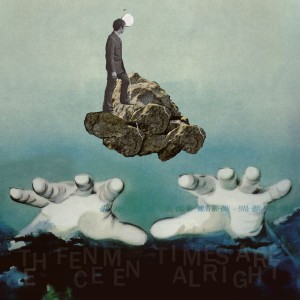[NOTE: I also talk a bit about this album and review on today’s episode of Matt Borghi’s The Sound Traveler Podcast, which you can find here. Also, as expected, I gush over Tore Brunborg‘s playing.]

Artist: Manu Katché
Album: Touchstone for Manu (2015, US; 2014, EU)
This is a bit of a different review, as it’s technically not a new listen for me, though it is a new release. Touchstone for Manu is part of ECM’s retrospective series the label has initiated for its more notable, frequent, and/or core artists. The retrospectives have included various forms: the :rarum series (Keith Jarrett, Jan Garbarek), box sets (e.g., Jack DeJohnette, Eberhard Weber), or non-:rarum compilations (e.g., Manu Katché, Anouar Brahem). Katché’s addition — along with Brahem’s — to that lineup helps to usher in a younger generation.
It shouldn’t surprise longtime readers of this blog that I’m a fan of Manu Katché. 2010’s Third Round not only led to my writing this site’s first album review, but it also quickly led me into the Katché catalogue. It was also through Third Round that I came to know the playing and library of Tore Brunborg, who I now consider one of my favorite living saxophonists.
Touchstone for Manu draws pretty equally from Katché’s four albums as a leader on ECM: 2005’s Neighbourhood, 2007’s Playground, 2010’s Third Round, and 2012’s Manu Katché. (1992’s It’s About Time [on BMG] and 2014’s Live in Concert [on ACT] aren’t included.) Chronologically, these albums go from an acoustic aesthetic rooted in more straight-ahead jazz to involving some electric and electronic elements as well as more pop grooves and/or devices. You can certainly hear this in the compilation’s selections. And this should be no surprise, as Katché has one foot each firmly planted in jazz and pop. Aside from the aforementioned Jan Garbarek, he’s also extensively played behind the likes of Peter Gabriel, Sting, and Joni Mitchell. His upcoming studio debut on ACT looks to get funky with a full horn section, which I can’t wait to hear.
As a composer, one thing I appreciate most about Katché work is the way he structures a piece. It’s a constant throughout his oeuvre. Instead of heavily relying on the typical head-solo-head[-outro] format that permeates so many jazz albums, Katché often includes segues, countermelodies, and other devices to maintain interest. (Of course, he’ll sometimes use the head-solo-head format as well, but it’s great that it’s not a crutch for him.) Sometimes it’s not clear if the lead line is improvising or playing a defined part — if it’s the melody or a solo.
Briefly, the lineup for each album (as represented on Touchstone, as some personnel don’t make it) is:
• Neighbourhood includes the rhythm section of Katché (drums, percussion), Marcin Wasilewski (piano), and Sławomir Kurkiewicz (double bass) with the frontline of elder heavies Jan Garbarek (sax) and Tomasz Stańko (trumpet).
• Playground keeps the same rhythm section but features a younger frontline of Mathias Eick (trumpet) and Trygve Seim (sax). Another acoustic quintet.
• Third Round has the rhythm section of Katché, Pino Palladino (electric bass), Jason Rebello (piano), and Jacob Young (guitar), with Tore Brunborg (sax) as the solo horn.
• Manu Katché is a pared-down quartet of Katché, Jim Watson (piano, Hammond B-3), Brunborg (sax), and Nils Petter Molvær (trumpet & effects).
Touchstone includes some nice variety. The first half features the acoustic bands with the electric ones in the latter half, allowing the listener to hear the stylistic evolution over his first decade as a leader on ECM. Another thing worth noting is that, for a drummer to be leading an instrumental band, it’s remarkable how restrained Katché’s playing is in the studio. While there are some active and/or funky tunes (e.g., “So Groovy,” “Keep on Tripping,” “Running After Years”), the drums never really let loose. Katché’s happy to lay down a groove and to let the band play with and off each other as opposed to bathe in the spotlight. Over the course of the album’s eleven tracks, you hear Katché’s sound (through his band and compositions) really come into its own. From the straight-ahead numbers (“Take Offs and Land,” “Song For Her”) to the more pop-oriented (“Swing Piece”) and a synthesis of both (“Running After Years,” “Slowing the Tides”).
Touchstone for Manu is a great place to start for the uninitiated. With an even mix of albums and styles, it’s a nice primer and reference point for his output as a leader on ECM. Highly recommended.
ECM link here
Amazon link here
iTunes link here
[If you’d like to see a more fiery performance, I can’t recommend this video enough. The lineup is largely a transition band between Playground and Third Round, featuring some personnel from both albums. Similar gusto is also present on Live in Concert.]


